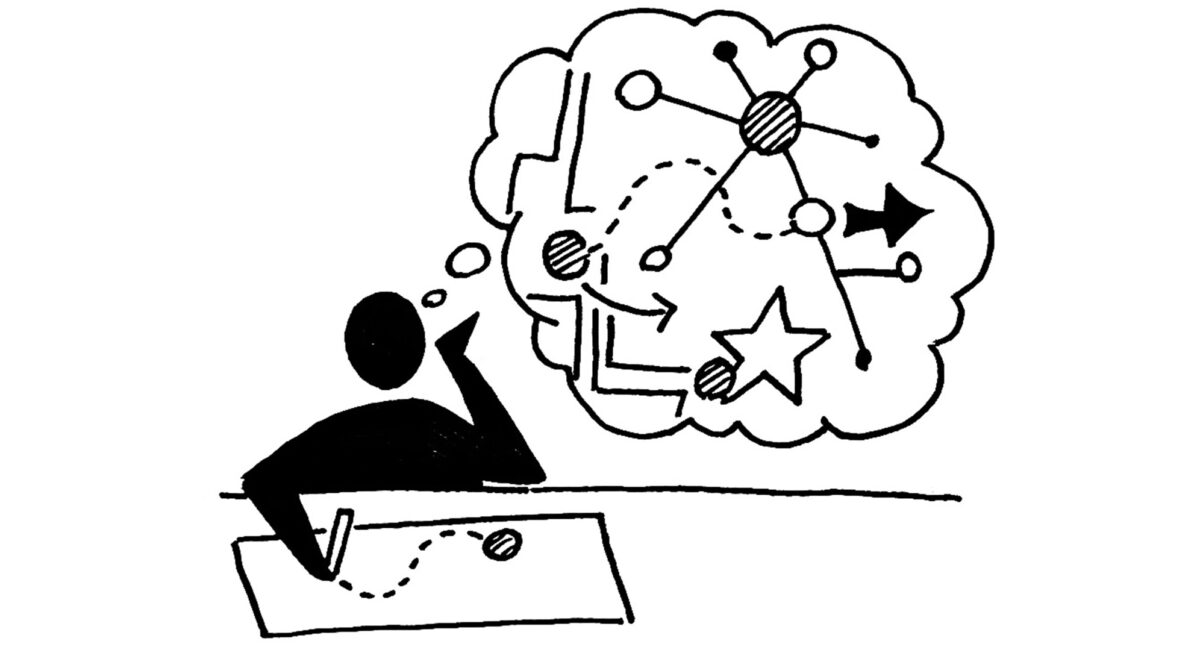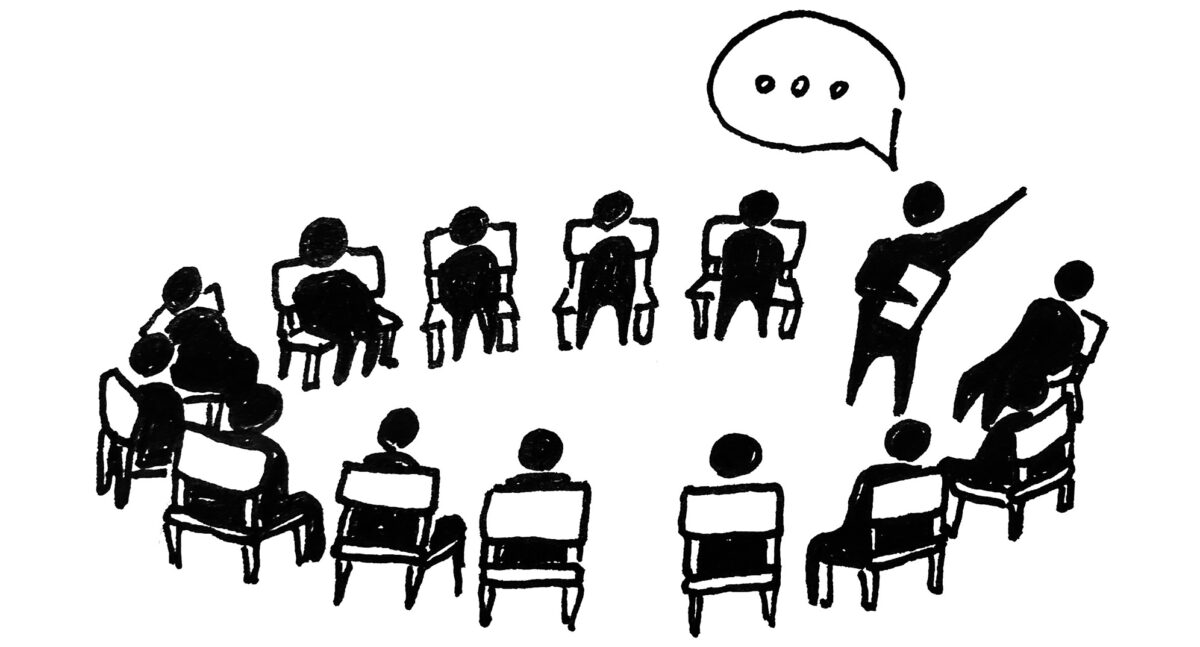Cognitive mapping is any visual representation of a person’s (or a group’s) mental model for a given process or concept and may also take the form of mind maps or concept maps. There are no visual rules that they need to obey: there is no restriction on how the concepts and the relationships between them are visually represented. They are used to externalize knowledge, identify themes across different concepts and model thinking.
Materials:
- multicolored sticky notes
- markers
- large format paper
- optional: whiteboard and dry erase markers
STEPS:
Prework
1.Prepare and practice: Compared to traditional user interviews, cognitive mapping sessions are more unpredictable and require flexibility and improvisation. Your first 2-3 cognitive mapping sessions will likely offer more learnings on the method than on the topic you want to study. Consider running a practice session with a team member before the actual sessions.
2.Decide on your approach: There are two primary things you should decide ahead of time:
- Introduction: A good rule of thumb is to begin with a word-association exercise to generate ideas, then move to explore those terms’ meanings and relationships to other words, forming either an organizational structure or groups of categories.
- Overall Flow: Plan ahead of time if you want your session to be free-form (participants create their own maps) or structured (participants fill in a given skeleton structure — e.g., a mind map, concept map, Venn diagram).
- Recording Format(s) for Session: Ideally you should videorecord the sessions so that you will be able to review them later. The benefits of recording are: (1) rewatching the creation of the map may uncover insights not caught in the moment, (2) you can revisit sessions if you find that you need clarification during the analysis and (3) you can educate others on the method. Set up and test notetaking methods and documentation as well.
3.Contact participants: Explain the reason for the interview and how the data from it will be used. Inform participants that you will invite them to write, draw, and move sticky notes around throughout the session, as well as how you plan to record the session. However, do not use the phrase “cognitive mapping,” so people do not research the topic and study for the interview.
4.Assign roles:
- Facilitator: The primary role of the facilitator is to conduct the interview. The facilitator is responsible for introducing the team, instructing the participant on the method, and asking the questions.
- In-room notetaker: The in-room note-taker should focus on taking notes regarding not only what participants say, but also how they do it:
- How and where do participants place items on the map?
- What physical gestures do they make throughout the interview? What content do these gestures relate to?
- When are the participants unsure or ambiguous?
For Activity
1.Opening: The opening sets the stage for the rest of the interview. Don’t rush, invest some extra time in explaining the purpose of the session. The goal of the opening is to make the participant feel valued and aware that speaking openly will have no negative consequences. The opening should put the participant at ease, ultimately making for a more relaxed interview. Introduce yourself, the purpose of the research, and the cognitive mapping method.
2.Ask an initial check-in question: Prepare an initial warm-up question to start the conversation. It should be easy to answer an open-ended
3.Facilitating the session: After the initial trigger question, the facilitator should prompt the participant to continue to build out the map. The goal of the facilitator is to make the conversation flow and feel natural, rather than disjointed. The following are some example questions:
- “If these terms were to be grouped, how would you group them? Go ahead and do this.”
- “Is there a relationship between these groupings? If so, do you mind showing us by drawing it?”
- “Let’s focus on this one (point at a sticky note with a term on it). What makes up [read term on sticky].”
- “When you say [term on sticky], what comes to mind?”
- “Let’s circle back and give some attention to this area of the map, but through a new lens of [new topic].”
- “This feels really fleshed out. Is there anything else you want to include? (Give time for the participant to add any last thoughts.) If not, let’s flip to a new page and tackle the topic of [new topic].”
- “That is interesting. Let’s write that term down.”
- “Go ahead and note for what you mean by that.”
- “Where does that topic fit on the map?”
- “At what point does what you’re referencing verbally occur? Can you show me on your map?”
4.Closing: Make sure to ask if the participant has anything else to share or add to the completed map(s). Thank the participant and make sure that the participant leaves feeling valued. If appropriate, the closing is also a good time to gather the participant’s thoughts on the method used. This input can inform your future use of cognitive mapping.
Analysis
A cognitive mapping session will have 3 data outputs: (1) the transcript (and the video) of the interview, (2) the map created by the participant during the session, and (3) the notes taken throughout the session by various note takers.
Cognitive mapping is a qualitative research method and, thus, the mapping output will require qualitative analysis. Data will be sorted and coded in order to uncover the overarching themes.
CONSIDERATIONS:
- Cognitive mapping as a means of data collection is most often used in exploratory and discovery-based research, research about specific topics with complex relationship or process components, or PAR (Participatory Action Research).
- Supplying and existing framework/ set of terms to work within can create more refined maps that are targeted towards specific goals or questions.
- This exercise can be adapted to work for a group of people as well as individual participants.
- Changing the medium of the mapping can generate varied results. For example, having people map using virtual tools vs. analog, or asking participants to stand up and map at a white board vs. sitting at a table.
REFERENCES:
- Gibbons, S. (2019, August 11). Cognitive mapping in User Research. Nielsen Norman Group. https://www.nngroup.com/articles/cognitive-mapping-user-research/


